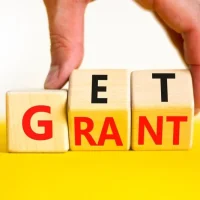In the competitive landscape of nonprofit funding, the significance of grant application feedback cannot be overstated. Feedback serves as a critical tool for organizations seeking to refine their proposals and enhance their chances of securing funding. When grant applications are submitted, they often undergo rigorous evaluation by funders who assess various aspects, including the clarity of objectives, the feasibility of proposed activities, and the overall impact of the project.
By obtaining feedback from these evaluations, organizations can gain valuable insights into what worked well and what did not, allowing them to make informed adjustments in future applications. Moreover, feedback is not just about identifying shortcomings; it also highlights areas of strength that can be leveraged in subsequent proposals. Understanding how funders perceive an organization’s mission, vision, and capacity can help nonprofits align their messaging with donor priorities.
This alignment is crucial in a landscape where funders are increasingly looking for projects that resonate with their own goals and values. By actively seeking and incorporating feedback, organizations can foster a culture of learning and adaptability, ultimately leading to more successful grant applications.
Analyzing and Incorporating Feedback from Previous Applications
Understanding the Underlying Reasons
Once feedback is received, it’s essential to analyze it thoroughly. This involves not only reading the comments but also understanding the underlying reasons behind them. For instance, if a funder notes that a project’s objectives were unclear, it may indicate a need for more precise language or a better-defined scope of work.
Creating a Roadmap for Improvement
By dissecting the feedback into actionable components, organizations can create a roadmap for improvement. This process may involve convening a team to discuss the feedback collectively, ensuring that multiple perspectives are considered in the analysis. Incorporating feedback into future applications requires a strategic approach.
Prioritizing Improvement Areas
Organizations should prioritize the most critical areas for improvement based on the feedback received. For example, if multiple funders have pointed out weaknesses in the evaluation plan, it may be beneficial to invest time in developing a robust monitoring and evaluation framework before submitting new proposals. Additionally, organizations can document lessons learned from each application cycle, creating a repository of insights that can inform future efforts.
Enhancing Proposal Quality and Building Institutional Knowledge
This systematic approach not only enhances the quality of proposals but also builds institutional knowledge that can benefit the organization in the long run.
Identifying Strengths and Weaknesses in Previous Proposals
A comprehensive review of past proposals is essential for identifying both strengths and weaknesses. This process involves examining successful applications alongside those that were not funded. By comparing these documents, organizations can pinpoint elements that contributed to success, such as compelling narratives or strong partnerships, as well as factors that may have led to rejection, such as vague objectives or insufficient budget justification.
This dual analysis allows nonprofits to celebrate their achievements while also recognizing areas that require further development. Furthermore, engaging stakeholders in this evaluation process can provide additional insights. Board members, staff, and even beneficiaries can offer valuable perspectives on what aspects of previous proposals resonated with them or fell short.
This collaborative approach not only enriches the analysis but also fosters a sense of ownership among team members regarding the proposal development process. By understanding both strengths and weaknesses, organizations can craft more compelling narratives that effectively communicate their mission and impact to potential funders.
Utilizing Feedback to Refine Project Objectives and Outcomes
Refining project objectives and outcomes based on feedback is a crucial step in enhancing grant applications. Clear and measurable objectives are fundamental to any proposal, as they provide a roadmap for implementation and evaluation. Feedback often reveals whether objectives are too broad or lack specificity.
By revisiting these objectives with a critical eye, organizations can ensure they are SMART—Specific, Measurable, Achievable, Relevant, and Time-bound. This clarity not only strengthens the proposal but also sets a solid foundation for project implementation. Additionally, incorporating feedback allows organizations to align their project outcomes with funder priorities more effectively.
Funders often have specific goals they wish to achieve through their grants; understanding these goals enables nonprofits to tailor their proposals accordingly. For instance, if feedback indicates that a funder is particularly interested in sustainability or community engagement, organizations can adjust their outcomes to reflect these priorities. This alignment not only increases the likelihood of funding but also enhances the overall impact of the project by ensuring it meets both community needs and funder expectations.
Improving the Clarity and Coherence of Proposal Narratives
The narrative component of grant proposals is where organizations have the opportunity to tell their story and articulate their vision. However, clarity and coherence are paramount; without them, even the most innovative projects may fail to capture a funder’s interest. Feedback often highlights areas where narratives may be convoluted or lack focus.
By revisiting these narratives with an emphasis on clarity, organizations can streamline their messaging and ensure that key points are communicated effectively. To improve clarity, organizations should consider employing techniques such as outlining key messages before drafting the narrative or using visual aids like charts and graphs to illustrate complex ideas. Additionally, peer reviews can be invaluable; having colleagues review proposals can provide fresh perspectives on readability and coherence.
By prioritizing clear communication in proposal narratives, organizations not only enhance their chances of securing funding but also foster stronger relationships with funders who appreciate well-articulated projects.
Enhancing Budget and Financial Planning Based on Feedback
A well-structured budget is a critical component of any grant proposal, yet it is often an area where organizations struggle. Feedback from funders frequently points out issues such as unrealistic cost estimates or insufficient justification for expenses. To address these concerns, organizations must take a meticulous approach to budget development.
This involves not only ensuring that all costs are accounted for but also providing clear explanations for each line item. Incorporating feedback into budget planning may also involve revisiting funding sources or exploring alternative cost-saving measures. For instance, if feedback indicates that certain expenses were deemed excessive, organizations might consider negotiating better rates with vendors or seeking in-kind contributions from partners.
Additionally, presenting a budget narrative alongside the financial document can help clarify how funds will be utilized and demonstrate fiscal responsibility to potential funders. By enhancing budget planning based on feedback, organizations can present a more compelling case for funding while ensuring financial sustainability for their projects.
Strengthening Partnerships and Collaborations in Future Proposals
Partnerships and collaborations can significantly enhance the credibility and impact of grant proposals. Feedback from funders often emphasizes the importance of demonstrating strong partnerships that align with project goals. Organizations should take this feedback seriously by actively seeking out collaborations with other nonprofits, community groups, or academic institutions that complement their mission.
These partnerships not only strengthen proposals but also broaden the reach and effectiveness of projects. Moreover, effective collaboration requires clear communication and shared objectives among partners. Organizations should invest time in building relationships with potential collaborators before proposal writing begins.
This groundwork ensures that all parties are aligned on project goals and roles within the proposal. Additionally, showcasing past successful collaborations in proposals can serve as evidence of an organization’s ability to work effectively with others, further enhancing credibility in the eyes of funders.
Implementing a Continuous Improvement Process for Grant Applications
Finally, establishing a continuous improvement process for grant applications is essential for long-term success in securing funding. This process involves regularly reviewing feedback from funders and integrating lessons learned into future applications systematically. Organizations should create a culture of reflection where team members are encouraged to share insights from each application cycle openly.
To facilitate this continuous improvement process, organizations might consider developing a standardized template for capturing feedback and lessons learned after each grant submission. This template could include sections for strengths identified by funders, areas for improvement, and specific actions taken in response to feedback. By institutionalizing this practice, nonprofits can ensure that they are not only learning from past experiences but also evolving their approach to grant writing over time.
In conclusion, understanding and utilizing grant application feedback is vital for nonprofit organizations aiming to secure funding successfully. By analyzing past proposals, refining objectives, improving narrative clarity, enhancing budget planning, strengthening partnerships, and implementing continuous improvement processes, organizations can significantly increase their chances of success in future grant applications. Embracing this iterative approach not only leads to better proposals but also fosters a culture of learning and growth within the organization itself.









































